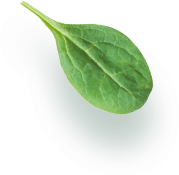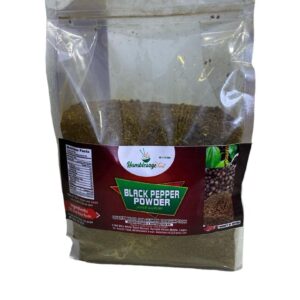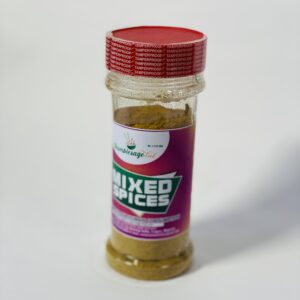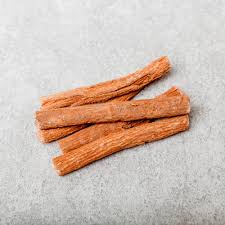

Description
Banga stick, also known as “Oburunbebe stick” or “Banga spice stick,” is a traditional spice used primarily in West African cuisine, particularly in Nigeria. It is derived from the pith of the stem of the Rhizophora racemosa plant, which is a type of mangrove. The stick is an essential ingredient in preparing “Banga soup,” a rich and flavorful palm nut soup popular among the Urhobo, Isoko, and Itsekiri people of the Niger Delta region.
Nutritional Profile
While Banga stick itself is used more for its aromatic properties rather than nutritional content, it contains various bioactive compounds contributing to its health benefits:
- Calories: Minimal caloric content as it is used sparingly.
- Carbohydrates: Contains trace amounts of carbohydrates.
- Protein: Very low protein content.
- Fats: Minimal fat content.
- Vitamins and Minerals: Contains small amounts of vitamins and minerals.
- Phytochemicals: Rich in essential oils and phytochemicals such as alkaloids, flavonoids, and tannins, which impart health benefits and flavor.
Health Benefits
- Digestive Health: Banga stick aids digestion by stimulating the production of digestive juices, helping to alleviate indigestion and bloating.
- Anti-inflammatory Properties: Contains compounds that reduce inflammation, making it useful for managing inflammatory conditions.
- Antimicrobial Activity: Exhibits antimicrobial properties, which can help in fighting bacterial and fungal infections.
- Antioxidant Benefits: Rich in antioxidants, Banga stick helps neutralize free radicals, reducing oxidative stress and protecting against cellular damage.
- Respiratory Health: Traditionally used to treat respiratory conditions, helping to clear mucus and improve breathing.
- Pain Relief: Used in traditional medicine to relieve pain, particularly in conditions like arthritis and muscle aches.
Cultural and Traditional Uses
Banga stick holds significant cultural importance in many Nigerian communities:
- Traditional Medicine: Used in African traditional medicine for its healing properties, including treating fever, infections, and digestive disorders.
- Cultural Cuisine: Integral in preparing traditional dishes like Banga soup, a staple in many West African households.
- Ceremonial Use: Sometimes used in cultural ceremonies and rituals to impart its unique aroma and flavor.
Culinary Uses
Banga stick is highly valued for its aromatic and flavor-enhancing properties in cooking:
- Flavoring: Adds a unique earthy, woody flavor to soups and stews.
- Seasoning: Used as a seasoning ingredient in Banga soup, a traditional palm nut soup.
- Spice Blends: Included in spice blends to enhance the flavor of various dishes.
- Broths and Stews: Infused in broths and stews to impart a distinctive aroma and taste.
How to Use Banga Stick
- Whole Stick: The stick is usually added whole to the pot while cooking and removed before serving, similar to bay leaves.
- Crushed or Ground: Can be crushed or ground into a powder and added to dishes for a more intense flavor.
- Infusion: Steep the stick in hot water or broth to extract its flavors before adding other ingredients.
Storage and Shelf Life
- Storage: Store Banga stick in an airtight container in a cool, dry place to maintain its potency and aroma.
- Shelf Life: When stored properly, Banga stick can last up to a year. Check for signs of mold or deterioration before use.
Culinary Tips
- Enhancing Flavor: Lightly crush or break the stick before adding it to dishes to release more of its aromatic compounds.
- Balancing Flavors: Use in combination with other traditional spices like crayfish, iru (fermented locust beans), and ataiko for a well-rounded flavor profile.
- Complementary Ingredients: Pairs well with ingredients such as palm nuts, meat, fish, and leafy greens commonly used in West African cuisine.
Additional information
| Weight | N/A |
|---|---|
| Package Size | 200g |
Related products
-
Sale!

Dried Ginger
₦26,000.00Original price was: ₦26,000.00.₦25,000.00Current price is: ₦25,000.00. Select options This product has multiple variants. The options may be chosen on the product page -
Sale!

Black Pepper Powder
₦2,500.00 – ₦50,000.00Price range: ₦2,500.00 through ₦50,000.00 Select options This product has multiple variants. The options may be chosen on the product page -
Sale!

Mixed Spices
₦4,000.00Original price was: ₦4,000.00.₦3,000.00Current price is: ₦3,000.00. Select options This product has multiple variants. The options may be chosen on the product page -
Sale!

Suya Spice
₦4,000.00Original price was: ₦4,000.00.₦3,000.00Current price is: ₦3,000.00. Select options This product has multiple variants. The options may be chosen on the product page

